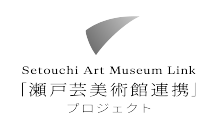

In this exhibition, divided into three phases, we present works by Nakayama Iwata (1895?1949) to commemorate the 130th anniversary of the photographer’s birth.
After graduating from a temporary photography department at the Tokyo School of Fine Arts, Nakayama left Japan in 1918 and spent the next nine years or so in New York and Paris. His encounters with a variety of artists and exposure to pioneering art of the era during this period inspired Nakayama to develop a unique view of photography as an art form and create his own works. At the same time, he opened a studio as a commercial photographer, dealing primarily with portraits, while in New York, and made advertising and tourism photography after returning to Japan and moving to Ashiya. Moreover, Nakayama’s multifaceted and complex relationship with photography continued his entire life through activities such as instructing and overseeing an amateur photography group called the Ashiya Camera Club, and serving as a judge for a wide range of open-call photography competitions. In each phase of this exhibition, we focus on Nakayama Iwata’s keen eye and approach to cutting-edge art, which set him apart from many other Japanese photographers, by presenting works that are closely connected to the special exhibitions on view in the Temporary Exhibition Gallery (3F).
In the first phase of this exhibition, we feature the formal experiments of the photographer Nakayama Iwata and compare them to the works of the painter Paul Klee, the subject of a special exhibition on view at the museum until May 29.
Klee showered every aspect of his works with affection by playing with various images, cutting out and rotating finished elements, and savoring the textures and wrinkles of the paint and the support medium. Nakayama, who approached his diverse motifs with an aesthetic and focus unlike that of Klee’s, created works that were akin to small universes. Although he referred to these as “pure photographs,” Nakayama’s fondness for making odd compositions by fusing the formal sensibility that underlies his creations with a combination of circles, squares, and straight and curved lines is apparent in his early still-life and landscape photography.
In his largely silver-halide photographs, Nakayama was not able to realize the kind of color expression seen in Klee’s works, but a close look reveals an almost infinite amount of tonal variation between the blacks and the whites. By both interweaving negatives and positives, and deftly manipulating the distinctive photogram technique, which defines the form of an object as a silhouette, Nakayama produced numerous images that gave rise to a pitch-black world of dreams. We hope that you enjoy Nakayama Iwata's unparalleled works of pure photographic art.
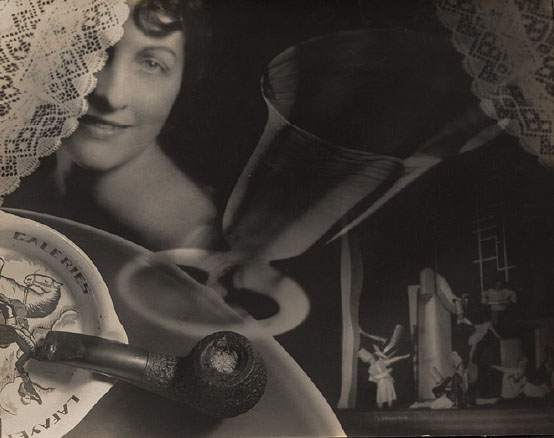
Untitled 1932 Gelatin silver print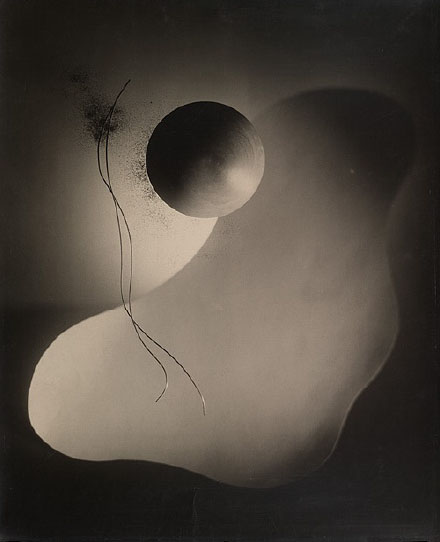
Eve 1940 Gelatin silver print
From the time that Nakayama Iwata attended the temporary photography department at the Tokyo School of Fine Arts, he dreamed of traveling abroad. Nakayama realized that dream in the fall of 1918, following his graduation, when he was sent to the U.S. to study photographic materials as an overseas business trainee by the Department of Agriculture and Commerce. After spending a little under a year on the West Coast, he went to New York and worked at the photographer Kikuchi Toyo’s studio. While living there, he married his wife Masako. Then, in the fall of 1921, Nakayama opened his own studio at 542 Fifth Avenue in New York.
It is reasonable to assume that while supporting himself, he began preparing to pursue a career as an artist. Although he associated with a variety of other Japanese people living in the U.S., three of his most important friendships were with the painter Shimizu Toshi, and the dancers Ishii Baku and Nyota Inyoko. It has been suggested that it was during his time in America that Nakayama was exposed to cutting-edge Modernism. However, it was only after he moved to Paris in 1926 that he came to see the trend as a form of expression related to his own work.
It seems almost certain that his acquaintance the painter Foujita Tsuguharu, whom he met in Paris provided him with some deeply insightful advice. Foujita stressed the need to start making art before trying to prepare the way forward, and the fact that the field of photography was ripe with the potential to create some of the most unique expressions in the world. This exhibition, presented simultaneously with The Parallel Careers of Tsuguharu Foujita and Yasuo Kuniyoshi, a special exhibition held in the Temporary Exhibition Gallery (- Aug. 17), focuses on the works Nakayama made during his time in New York and Paris. We hope that you enjoy viewing these works from Nakayama’s early days along with some later developments in his career.
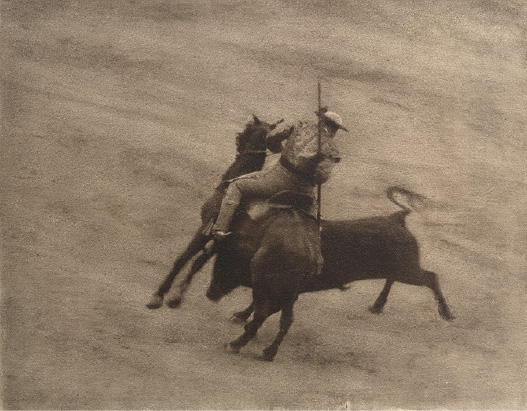
Bullfighting, Spain 1926 Gelatin silver print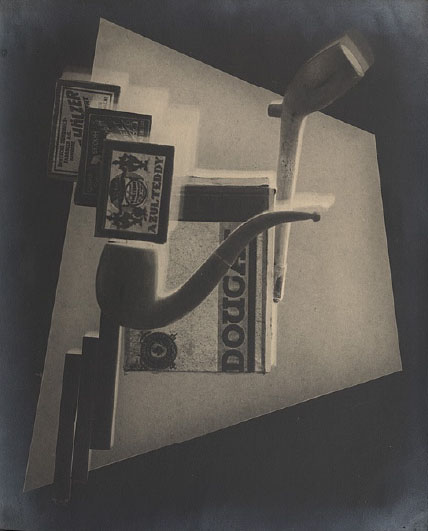
Pipes and Match 1927 Gelatin silver print
In this third phase of this three-part exhibition, we examine further developments in Nakayama Iwata’s career following his return to Japan. After arriving via the Trans-Siberian Railway in 1927, Nakayama began to work as a photographer at the Kazoku Kaikan (or Peers’ Club) in Tokyo. But feeling unsatisfied, he made his first visit to Ashiya (Hyogo Prefecture) through a connection of his wife Masako’s. Initially, Nakayama split his time between Tokyo and Ashiya. Then, in 1928, he called the rest of his family to Ashiya and gradually made the Kansai region the base of his activities. In 1930, Nakayama formed the Ashiya Camera Club, and later the same year received first prize for his work Fukusuke Tabi in the 1st International Photography Exhibition. In 1932, he began publishing a photography magazine called Koga with Nojima Yasuzo, Kimura Ihei and others. In 1936, he was entrusted with overseeing the Daimaru Photo Studio, which had been built inside the newly expanded Kobe branch of Daimaru Department Store in the city’s Motomachi neighborhood. Commuting between the store and his own studio in Ashiya, Nakayama shot order-made photographs while creating a wide range of photographic works. Some of his most widely known pieces, including A Woman from Shanghai, were made during this period in Kobe and Ashiya.
Nakayama was also deeply connected to Hanshinkan Modernism, a cultural movement that emerged before the war in the area between Kobe and Osaka. Nakayama’s works, including the 1st Kobe Port Festival series, his portraits of Takarazuka Revue performers and other cultural figures, and the Scenes of Kobe series (commissioned by the Municipal Tourist Office Kobe), capture the brilliance of the opulent Kansai Modernism era as a living legacy. We hope that as you compare various aspects of cultural life, which are also apparent in the Living Modernity exhibition (currently underway), you will enjoy savoring the countless works that are the product of Nakayama’s eye and sensitivity before the war.
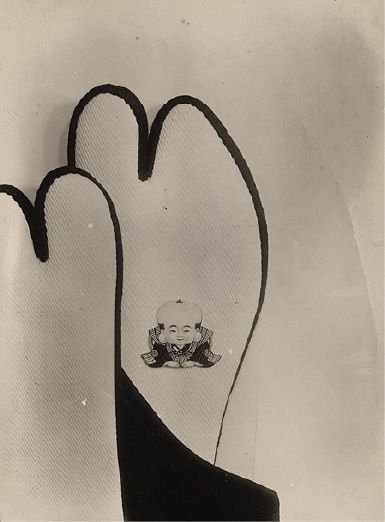
Fukusuke Tabi 1930 Gelatin silver print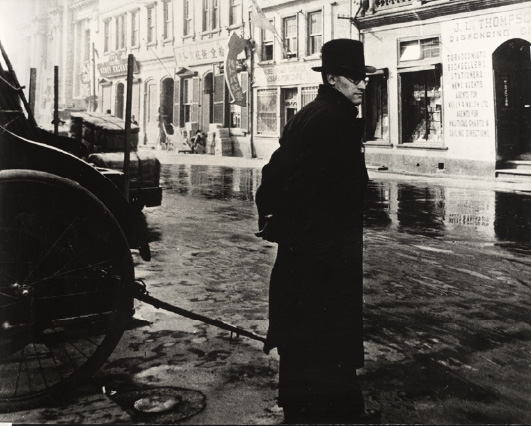
J. L. Thompson & Co., Kobe c.1939 Gelatin silver print

